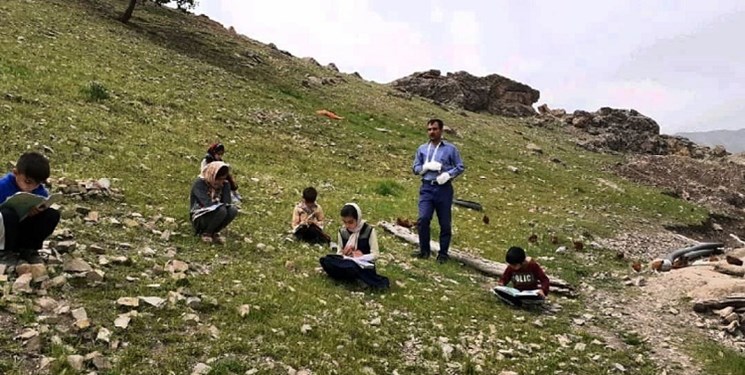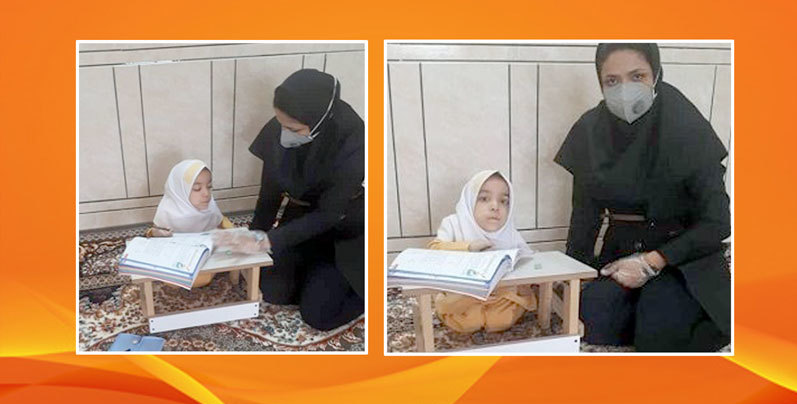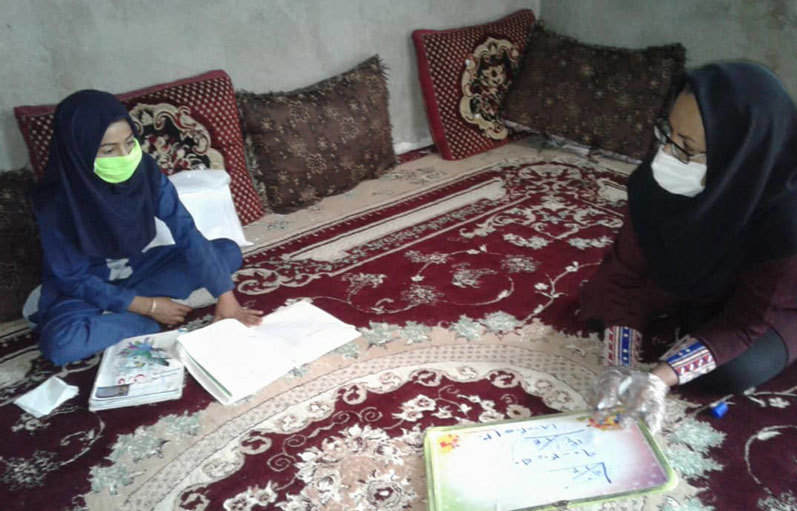With the onset of the coronavirus the Iranian government announced the schools must be shut down until further notice. Therefore, teachers started to educate their students via television, mobile phone applications and the internet.
However, there are some students in remote areas who do not have access to these facilities, and the teachers are instructing them in person. Even though they do not get high salaries, they pay the fare themselves to commute to the place where their students live.
One of these teachers is Moharram Navazesh who travels a long distance every day to instruct his students. He travels 110 kilometres every day to reach his students, and of course his students come from the villages in groups of two or three. They observe the principles of health and social distancing in the classes that are held in Ardabil province.
“Due to the social distancing and in order for the students to be separated from each other, I teach each grade separately,” he says.
All the teachers of the villages of Jafarabad in Moghan region are present at schools these days, taking care of the educational and even cultural issues of their students.
 Students with Special Needs
Students with Special Needs
Amid the corona outbreak, students with special needs must not lag behind. The situation of these students is a little different from that of ordinary students, and this multiplies their teachers’ efforts.
The education ministry has provided facilities for students with special needs to be able to benefit from virtual teaching, but this method is not like face-to-face training and real classroom atmosphere. Atefeh Rajabi is a teacher at Payam School in Gotvand, Khuzestan Province.
When she saw that Fatemeh, one of her students, could not use mobile phone and tablet because of her physical and mobility problems and weakness in her hand muscles, she decided to go to Fatemeh’s house and sometimes Fatemeh would come to her to practice lessons.
 Teaching Afghan Students
Teaching Afghan Students
At present, with the cooperation of IRIB, televised trainings are aired on channels 4 and 7. Meanwhile teachers are also educating their students in the cyberspace. However, there are some students who may not have access to none of these methods of training, or may not be able to use them for a variety of reasons.
Tahereh Nekouian is a first grade elementary school teacher who teaches Afghan students in the city of Noorabad Mamasani in person.
“14 out of 30 students do not have access to television, the Internet and smartphones, so I decided to teach these students in person while observing hygienic principles and social distancing,” she said.
 Teaching Nomadic Students
Teaching Nomadic Students
Some teachers, despite being sick or injured, continued educating their students. One of them is Sajjad Ahmadi, the teacher of nomadic students in Harsin city of Kermanshah province, western Iran. Although he has injuries, he goes door to door to teach his nomadic students.
Another teacher who was suffering from kidney and heart disease teaches his nomadic students in meadows.
The other one in the city of Saveh spent one month of his salary to buy Internet service for her poor students.
Another example is a devoted teacher in the city of Ahar in East Azarbaijan province, who bought a TV set for her student when she found out they did not have a TV at home.
These are some instances of the devotion of Iranian teachers who never forget their students despite their own lives being at risk.




